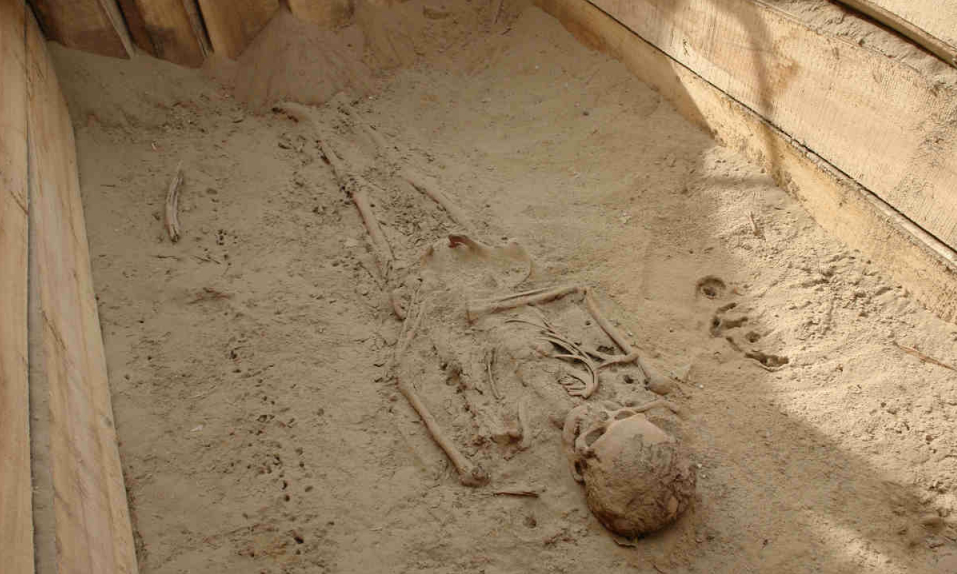Huge mummies in the Valley of the Giants
The area has long been home to a number of different races over 200 individuals have been found, report Cui Jia in Alar and Gao Bo in Turpan, Xinjiang Uygur region. Huge mummies Huge mummies
Long, boat-shaped wooden coffins are discovered at an ancient burial site in the Xinjiang Uygur. Liao Zhaoyu says to his colleagues that they had discovered one of the fabled giants of Chinese legend. Huge mummies
Golden-haired figures that was even taller than Yao Ming, the famous 2.26-meter-tall basketball player.
 Even though the discovery happened more than five years ago, Liao, director of the institute of the Culture of the Western Region at Tarim University in Alar, couldn’t hide his excitement when he recalled the moment he came face to face with the tallest man of a “tribe of giants”.
Even though the discovery happened more than five years ago, Liao, director of the institute of the Culture of the Western Region at Tarim University in Alar, couldn’t hide his excitement when he recalled the moment he came face to face with the tallest man of a “tribe of giants”.
The local people dubbed the sand dunes that contained a number of oversized coffins “the valley of the giants”, so Liao called the tomb “Kungang”, the ancient name of Alar.
“The skeleton of the tallest mummy discovered so far is about 2.3 meters, (2.3m = 7ft 635⁄64in ) Huge mummies
and the coffin is about 2.8 meters long (2.8m = 9ft 215⁄64in),
but medical experts say the man may have been even taller when he was alive. Huge mummies
Up to 3 inches (7ft 935⁄64in)
In addition to features similar to those of ancient Europeans, such as blond hair and high cheekbones,
many of the mummies or skeletons have large frames, more than 2 meters tall,”
(6ft 647⁄64in) the average height today is only 5ft 8in.
a difference of (1047⁄64 in) in height loss on average.
This is hard evidence for a height decline by devolutionary processes.
The genetic channges from then to now are a case of genetic entropy.
One of the first experts to explore the site in 2003 was at the request of local farmers.
Relics, made from grass and reeds, and wooden statues, are consistent with those found in a dried-up lake in southern Xinjiang, but
the Kungang mummies are much taller,
according to Liao.
“The well-preserved mummy of a young woman, dubbed “The Beauty of Xiaohe”, was among the 30 mummies found at the lake site, the earliest of which dates from around 4,000 years ago.”
“Archaeological evidence indicates that human beings from different races have lived in Xinjiang since prehistoric times because of the area’s location on the border of Central Asia. In the Xiaohe tomb, we found the remains of ancient Europeans and Mongolians,” he said.
Ancient wooden leg?
For example, earlier research on the mummy of a middle-aged man from about 2,300 years ago revealed that he had been fitted with a prosthetic leg one of the earliest-known prosthetic limbs.
cuijia@chinadaily.com.cn and gaobo@chinadaily.com.cn
Excavated from Qorghas County, ancient Alimalik City, and now resides in the Xinjiang Uygur Autonomous Region Museum Collection.
An area that has a thousand year Christian heritage the silk road was traveled by multiple cultures but now Iran is making the claims for the land saying it is Muslim. As the Muslims claim part of every country and expand their brutal empire even the sovereign country of China has its parasites eating away at its national sovereignty. It was most likely the Iranians that killed these Christians and buried their bodies in the desert.
~Chris L Lesley



Comment